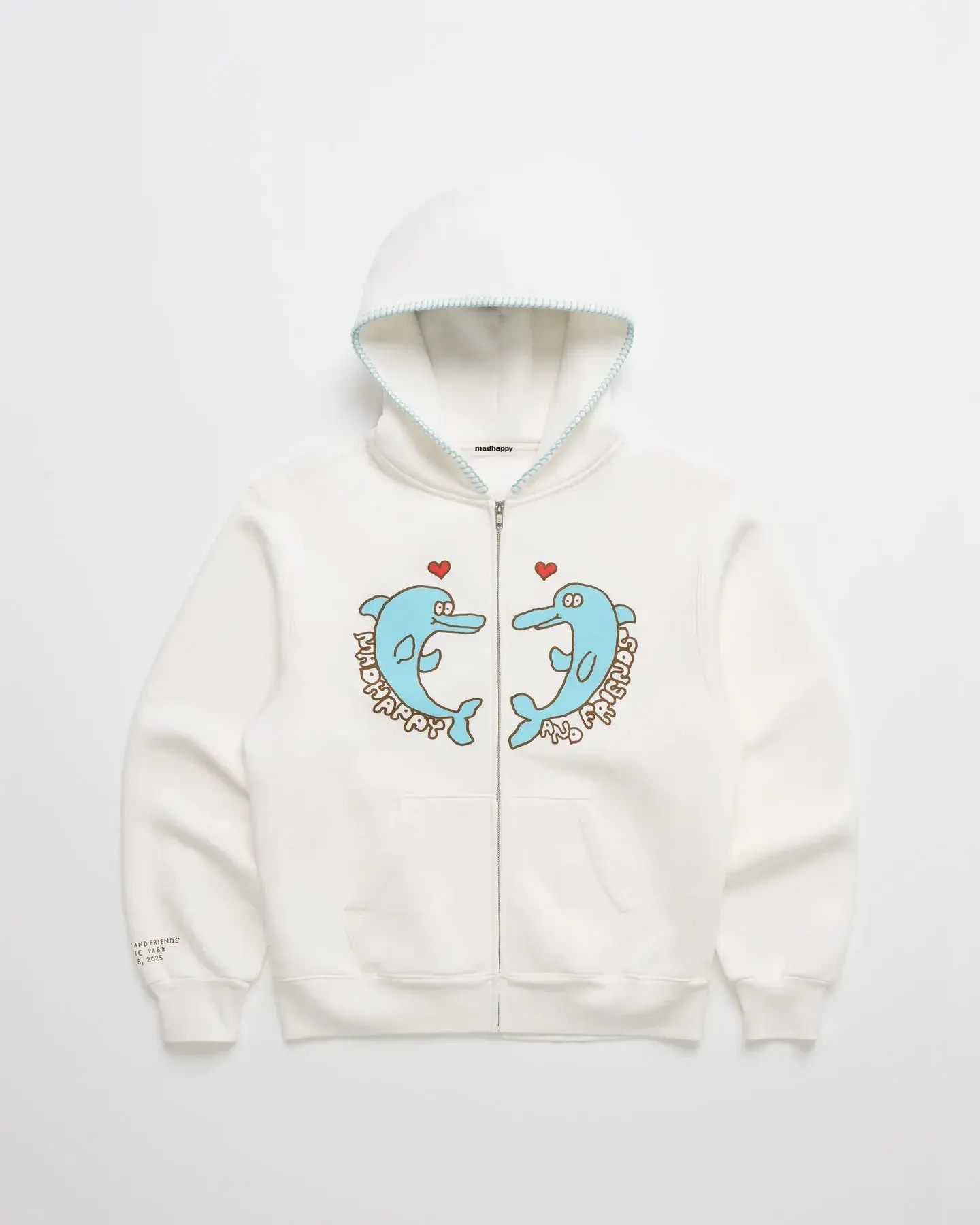Introduction to Madhappy: Where Fashion Meets Mental Health Advocacy
At the intersection of premium streetwear and mental wellness, Madhappy has emerged as more than just a clothing brand—it’s a movement. Launched in 2017 by co-founders Peiman Raf and Noah Raf, Joshua Sitt, and Mason Spector, Madhappy took the fashion world by storm with a unique mission: to destigmatize mental health through thoughtful designs and purposeful storytelling. What started as a niche streetwear line quickly evolved into a globally recognized platform for awareness, community, and positivity.
The Brand Philosophy: Optimism Through Authenticity
Madhappy is built on a core philosophy of optimism, but not in a shallow or overly commercialized sense. The brand recognizes the complex duality of human emotions—the juxtaposition of joy and struggle—and celebrates it unapologetically. The name itself, Madhappy, represents this emotional tension, acknowledging that life’s most beautiful moments often coexist with difficulty.
Unlike traditional fashion brands that focus purely on aesthetics or trends, Madhappy integrates emotional intelligence into its identity, aiming to shift societal narratives surrounding mental health. This makes it a trailblazer in fashion’s new age, where wellness, transparency, and purpose are as important as product design.
Product Line: More Than Just Streetwear
Quality Meets Purpose
Madhappy’s collections include hoodies, sweatpants, tees, outerwear, and accessories, all crafted from high-grade materials that offer comfort without compromising on sustainability. The designs are minimalist yet powerful, often adorned with emotionally resonant messages like “Local Optimist” and “It’s Okay To Feel.” These aren’t just slogans—they’re conversation starters.
Seasonal Collections and Collaborations
Each seasonal drop is more than just a launch—it’s an event, often accompanied by activations, pop-ups, and community-driven initiatives. Collaborations with major entities such as Columbia Sportswear, LVMH, Beats by Dre, and the NBA have elevated the brand while keeping its mission intact. These strategic partnerships fuse Madhappy’s emotional storytelling with the broader cultural zeitgeist, driving mass appeal.
The Madhappy Foundation: Driving Real Change
In 2020, the brand cemented its commitment to mental health by launching the Madhappy Foundation, a nonprofit organization that supports mental health research, education, and awareness initiatives. A percentage of every sale is donated to the foundation, funding critical projects with partners like The Jed Foundation and UCLA’s Friends of Semel Institute.
The foundation has also championed free resources such as mental wellness guides, podcasts, and blog articles—ensuring that Madhappy’s social impact extends beyond fashion consumers. This has made Madhappy a rare example of a brand that does not just talk the talk but walks the walk in the arena of mental health.
Retail Strategy: Direct-to-Consumer with Immersive Experiences
Pop-Ups and Flagship Stores
Madhappy’s growth model centers on a direct-to-consumer strategy, fueled by highly curated pop-up shops in cities like New York, Los Angeles, Miami, Aspen, and Paris. These locations aren’t just retail outlets—they’re mental wellness havens, designed with serene aesthetics and mindfulness-focused layouts.
In 2022, Madhappy opened its first permanent flagship store on Melrose Avenue in Los Angeles. The store serves as a hybrid between a clothing boutique and a community wellness space, complete with calming music, educational reading materials, and open seating for conversations.
Online Store Experience
Their eCommerce platform is just as thoughtful. The website not only sells apparel but also houses the Madhappy Journal, an editorial space filled with interviews, mental health articles, and personal essays from community members and influencers. This transforms the buying experience into one that fosters connection and introspection.
Influence on Pop Culture and Celebrities
Madhappy Hoodie has attracted a loyal following among A-list celebrities, athletes, and influencers. From LeBron James and Gigi Hadid to Justin Bieber and Kendall Jenner, the brand’s reach is as mainstream as it is meaningful. Yet unlike other brands that rely purely on celebrity endorsements, Madhappy’s appeal lies in its message-driven authenticity.
Celebrity collaborations are carefully curated to ensure alignment with Madhappy’s values. These partnerships are not superficial—they are organic relationships built on shared commitment to wellness and authenticity.
Sustainability and Ethical Manufacturing
Conscious of the environmental impact of fashion, Madhappy has taken several steps toward sustainable production. Many of its garments are made from organic cotton and recycled materials, and the brand works exclusively with factories that uphold fair labor practices.
The brand also invests in small-batch production, which helps reduce waste and ensures each piece is made with care. This not only enhances product quality but also resonates with consumers seeking responsible consumption in an increasingly eco-aware world.
The Future of Madhappy: More Than Just a Brand
Madhappy is not just riding a trend—it is shaping the future of streetwear and wellness. With plans to expand globally and deepen its foundation’s reach, the brand is poised to scale its impact across continents and cultures. Upcoming initiatives include mental health workshops, school programs, and multilingual resource development, ensuring the message of optimism reaches even more people.
The brand also aims to integrate technology-driven wellness tools, such as guided meditations, mood tracking, and AI-supported mental health check-ins via its mobile app, scheduled for release in the near future.
Why Madhappy Is a Model for Purpose-Driven Branding
In an era where consumers are increasingly value-driven, Madhappy Sweatpants offers a blueprint for how brands can be both profitable and purposeful. By authentically merging fashion, mental health advocacy, and community building, Madhappy exemplifies the power of intentional branding.
Its success proves that when companies operate with transparency, mission alignment, and emotional intelligence, they not only stand out in crowded markets but also foster lasting consumer loyalty.
